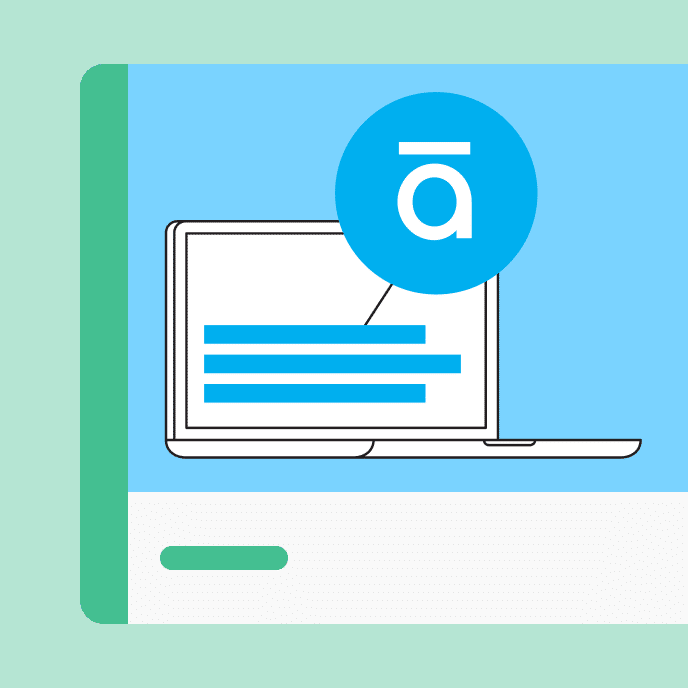Quick Wins: Short Customer Service Training Examples
Short on time but big on results? Explore customer service training designed to improve skills, enhance interactions, and transform the customer experience.

Customer service that drives success
The goal of customer service training is to equip agents with the skills to solve customer problems and deliver excellent experiences quickly and efficiently. Traditional training methods, such as long lectures or text-heavy courses, can fail to deliver engaging, hands-on experiences. This is where e-learning techniques come into play.
Microlearning has emerged as a highly effective way to upskill customer service agents, allowing to hone skills like professionalism, empathy, and efficiency. This type of compact, focused e-learning allows agents to learn at their own pace while covering essential topics, helping them improve their performance and provide exceptional service.
In this post, we’ll explore the essential components of microlearning and provide examples of how they improve customer service in any industry. Whether you’re looking to sharpen communication skills, improve problem-solving, or equip your team with the tools to handle challenging situations, these examples will inspire you to take your customer service training to the next level.
Key Takeaways
How does microlearning create exceptional customer service?

Long or elaborate training courses can sometimes feel like a hassle for busy customer service agents, especially those juggling learning with the demands of their other day-to-day tasks. Microlearning offers a less daunting experience, containing engaging content that easily fits a busy schedule. With self-paced learning sessions, agents can take small steps toward their learning while making significant gains toward providing excellent customer service.
Engaging components of microlearning
Effective microlearning contains bite-size yet engaging elements that make it easier for any customer service agent to learn, practice, and apply new skills. Below, let’s dive into four types of engaging training elements to consider for your microlearning and how they can help enhance customer service e-learning programs.
Interactive simulations and scenarios
Simulations allow customer service reps a safe place to practice real-world scenarios without the pressure of live customer interactions. Through role-playing, agents can engage in quick, customizable conversations that mimic specific challenges they regularly encounter. These opportunities allow agents to test different approaches and receive instant feedback, helping them correct mistakes and refine their skills in real time.
Mini video modules
Short, targeted videos lasting 3 to 5 minutes are the perfect companion for agents needing more hours to dedicate to training. These mini-videos break down complex ideas into easily digestible information, making it easy for agents to learn and apply the knowledge immediately. Videos often explain concepts in more engaging and relatable ways, featuring animations, graphics, and real-life examples.
Gamification
Gamification is exactly what it sounds like: integrating game-like features, such as points, rewards, leaderboards, and badges, into learning experiences. This approach adds a fun, friendly, competitive spin on learning that helps agents feel more motivated to stay engaged in learning by earning rewards and recognition.
Gamified systems also allow agents to see their progress, increasing their sense of accomplishment and allowing them to attain higher levels of proficiency.
Chat forums
Chat forums allow customer service professionals to connect with their peers, discuss challenges, and share success stories in an informal setting. These forums promote collaborative learning as agents learn from each other in a space where they may feel more comfortable asking for help. Additionally, agents can learn from others with more experience or agents in different departments, locations, or customer-facing roles.
4 fast and effective customer service training ideas
1. Customer service fundamentals
Starting with the basics is always a good idea, especially with new hires. Ultimately, all customer service teams need a solid understanding of customer service principles. These fundamentals offer an opportunity to standardize basic practices and skill development to create consistency among your customer service agents.
In this set of example lessons on customer service fundamentals, you’ll find information on:
- The four components of good customer service: Agents who understand the impact of friendliness, timeliness, expertise, and personalization have the foundations for high-quality customer service in future interactions.
- Personable vs. professional customer service: The best customer service balances personal and professional interactions. Understanding these concepts helps agents strike the right balance for success.
- Customer expectations: Understanding customer expectations prepares agents to promptly anticipate and address customers’ needs. Meeting customer expectations builds trust and long-term customer success.
2. Customer communication basics
Effective communication is at the heart of all human interactions, and great customer service is no exception. Agents who communicate clearly and listen actively are more likely to build trust, reduce misunderstandings, and quickly resolve customer issues.
You’ll find customer communication basics lessons in this collection, including:
- Active listening: Customer service depends on active listening, which makes customers feel understood. Learning techniques to listen attentively and respond thoughtfully helps agents focus on the customer and their needs, leading to resolutions.
- Building rapport and expressing empathy: When agents go the extra mile to get to the customer, it can go a long way. Simple things like using a customer’s name, asking their preferences, or understanding their background can help agents respond empathetically to customer needs.
- Customer feedback: When agents ask for and respond to feedback, it shows customers that they value their opinions. Whether positive, negative, or neutral, how agents respond to feedback can make or break customer trust.
3. Addressing difficult situations
No matter how skilled an agent is, unexpected challenges will inevitably emerge. Whether an agent is dealing with angry customers or managing high call volumes, the key to success is staying calm and focused on solutions.
In this collection of lessons dealing with difficult customer service situations, you’ll find insights about:
- Top customer frustrations: It’s easy to get defensive when customers lash out, but helping agents understand the reasons behind these behaviors can prepare them with helpful ways to respond. Behavior is language, so learning the language of frustrated customers helps agents approach customers empathetically.
- Managing customer frustrations: When done positively, the power of an apology or properly addressing a refund or cancellation request can bring about valuable insights. When agents are straightforward and address frustrations head-on with quality customer service, they strengthen brand reputation and long-term customer relationships.
- Saying “no” to customers: When agents give in to fears and offer misleading resolutions, they only make customers’ concerns more of a problem. If a request cannot be met, it’s better to lead with an honest, empathetic “no.” Afterward, it’s essential for agents to explain why they cannot meet the request and offer alternative solutions.
4. Cultural sensitivity in customer service
In our globalized world, it isn’t uncommon for a customer service representative to interact with customers worldwide. Understanding cultural differences, norms, and expectations is critical for delivering personalized customer service.
This collection of cultural sensitivity in customer service lessons contains insights on:
- Understanding cultural differences: Culture plays a role in customer interactions, from communication and time to purchasing needs and social norms. When agents are aware of these differences, they can approach different cultures with openness and flexibility.
- Communicating across cultures: While English is widely spoken internationally, many customers may speak it as a second language, not natively. Clear and concise language or visuals allow customer service representatives to communicate more effectively with diverse customers.
- Confronting cultural bias: Agents should avoid making decisions about customers based on their cultural bias. We all have biases, but by acknowledging them, agents can be honest and assess whether their bias impacts their customer service skills.
Elevate your customer service skills
Customer service is a vital aspect of any business, and your company’s success depends on your team’s ability to deliver excellent service at every touchpoint. Short e-learning courses that cover essentials such as customer service fundamentals, communication, conflict resolution, and cultural sensitivity offer an excellent start for agents to learn critical skills to thrive in their roles. Whether you’re looking for similar topics or specific training for your company’s needs, these examples are just the beginning.
You may also like

Translation vs. Localization: What’s the Difference?
Compare the difference between translation vs. localization and find out how to choose the best approach for your global workforce training needs.

